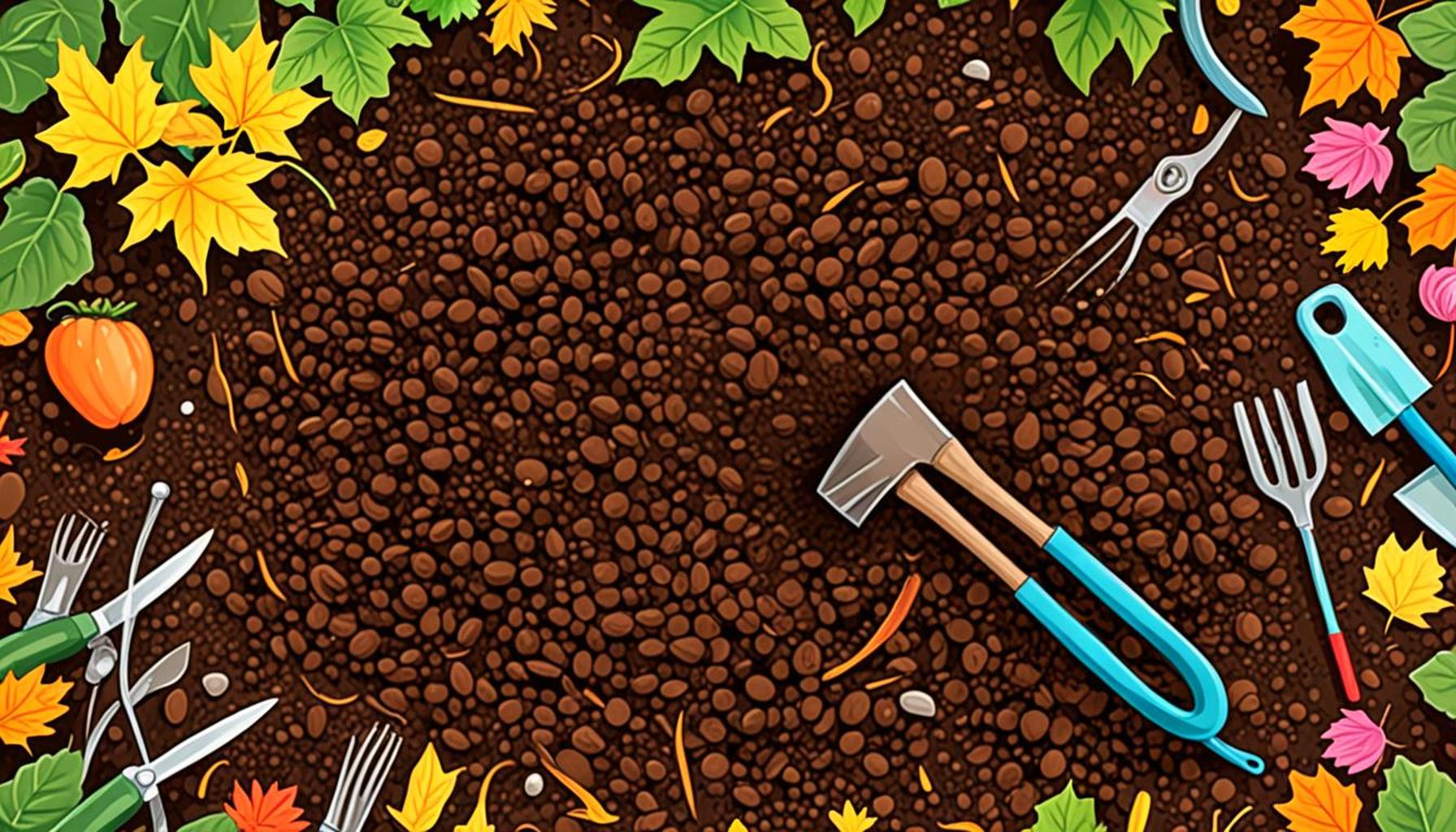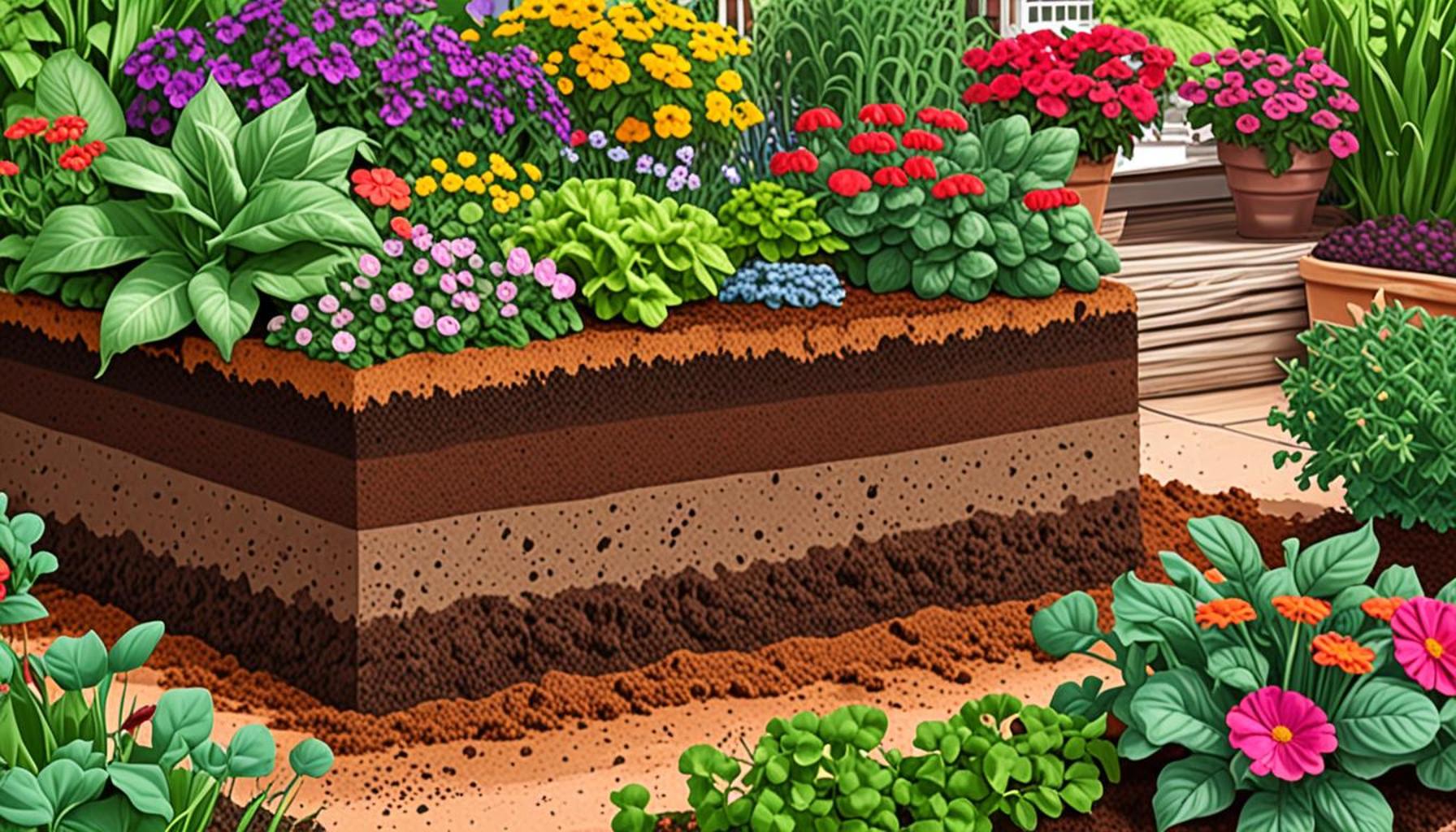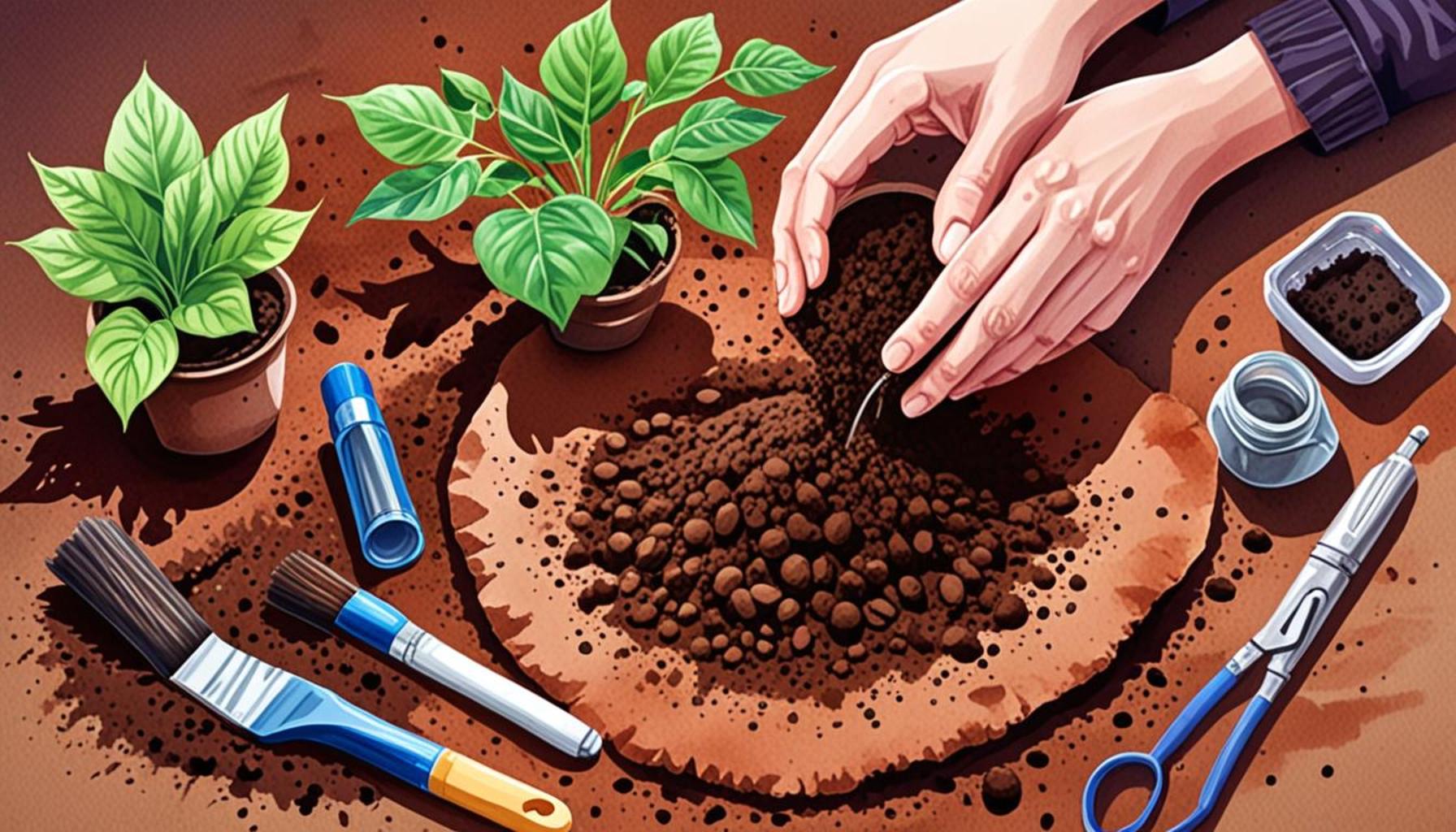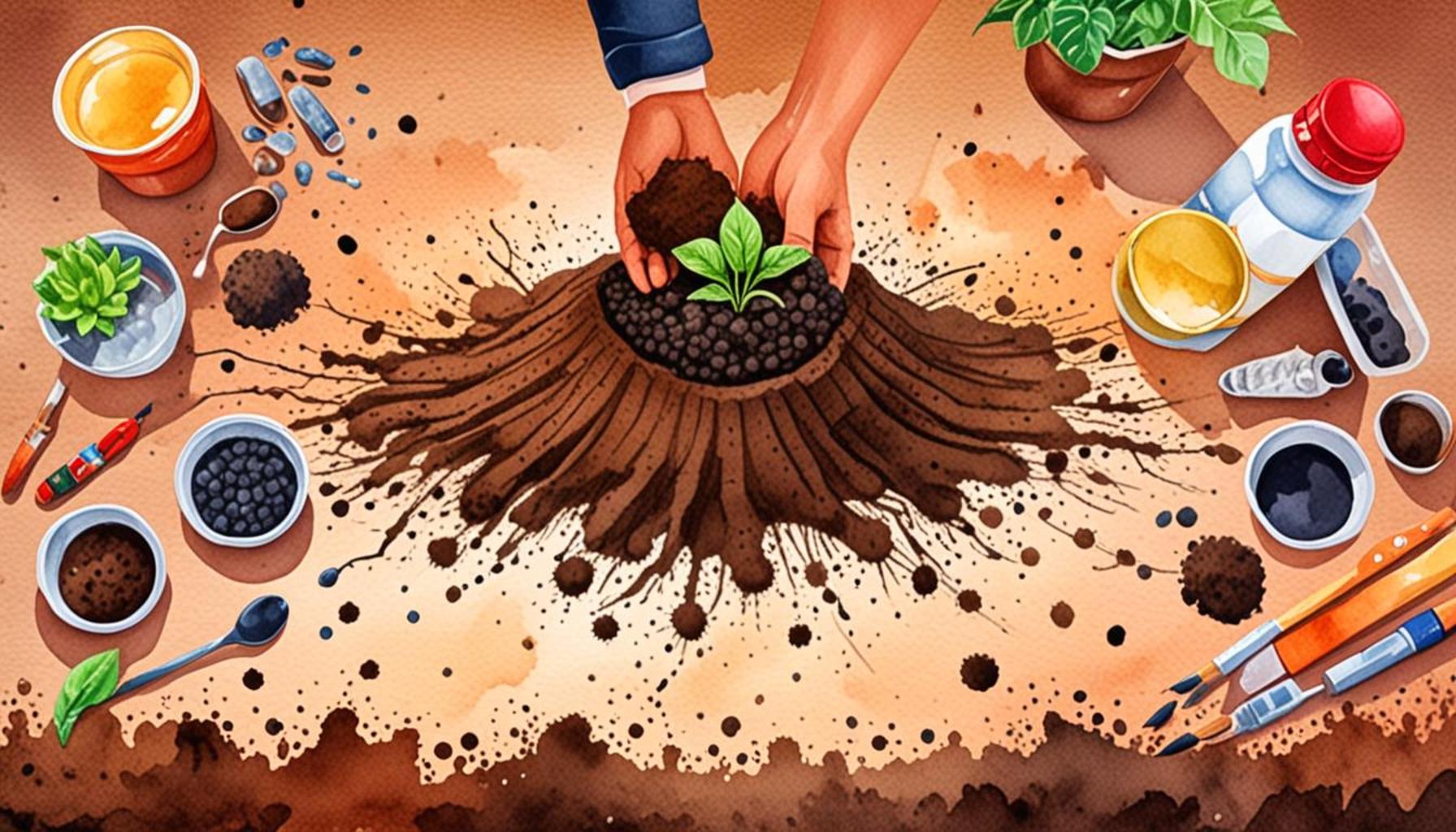Seasonal Soil Preparation: Best Practices for Spring and Fall Gardening

Understanding the Art of Soil Preparation
One of the cornerstones of successful gardening lies in the meticulous preparation of soil. Plants thrive in environments where the soil is not only nutrient-rich but also well-aerated and properly structured. This is why grasping the intricacies of seasonal soil preparation becomes pivotal for any gardener—be it for flourishing summer gardens or robust winter harvests. The vitality of your soil directly impacts the quality, health, and yield of your crops, making it essential to dedicate time and effort to its preparation.
Beginning your preparations in spring and fall is critical for maximizing your gardening potential. Here are some key practices you should consider:
- Testing Soil Quality: Understanding the pH levels and nutrient content of your soil lays the groundwork for informed revisions. Kits can be purchased from local garden centers or online that provide insights into nitrogen, phosphorus, and potassium levels. For instance, a soil pH of 6.0 to 6.8 is often ideal for growing most vegetables, while flowering plants might prefer slightly different acidity levels.
- Adding Organic Matter: The inclusion of organic matter, such as compost, well-rotted manure, or mulch, is crucial for enriching soil health. A study by the USDA emphasizes that organic matter can improve soil structure, enhance moisture retention, and promote microbial activity. For example, incorporating a few inches of compost can increase your soil’s fertility and encourage a thriving ecosystem underground.
- Tilling and Aerating: These practices are particularly beneficial for breaking up compacted soil, which hinders root growth. Tilling in spring can create a fine seedbed for planting, while fall aeration allows for necessary nutrients to penetrate deeper. Ensure that tilling is done gently to prevent disrupting the natural balance of soil organisms.
Seasonal soil preparation not only serves to improve soil quality but also contributes significantly to environmental sustainability. Engaging in these practices allows for a multitude of benefits:
- Promotes Healthy Plant Growth: By nurturing the soil foundation, you effectively develop strong roots that support lush foliage and prolific blooms.
- Prevents Soil Erosion: Healthy soil structure retains moisture and nutrients, protecting against erosion caused by wind or rain. Additionally, planting cover crops during off-seasons can serve as a protective measure against erosion.
- Increases Biodiversity: Well-prepared soil fosters a diverse ecosystem, encouraging the proliferation of beneficial insects, earthworms, and microorganisms that are crucial for a balanced garden.
As the vibrant days of spring beckon new growth and the reflective nature of fall encourages preparation for the colder months, understanding soil preparation becomes essential for any gardener. By mastering the best practices of seasonal soil preparation, you not only enhance your gardening efforts but also cultivate a more sustainable and biodiverse environment. Equip yourself with this knowledge, dig deeper into your gardening practices, and unlock the full potential of your garden!

DIVE DEEPER: Click here to uncover the benefits of mulching
Essential Steps for Spring Soil Preparation
As spring arrives, it signals a time of rejuvenation—not just for plants but also for the soil that nurtures them. For gardeners eager to establish healthy crops, understanding the steps involved in spring soil preparation lays the foundation for a bountiful harvest. Each task, when executed with mindfulness, contributes to the overall success of your gardening efforts.
1. Soil Testing: An Informed Beginning
The first step in any soil preparation strategy is soil testing. This process enables you to evaluate the nutrient levels and pH balance of your soil, which is crucial for plant health. Many local agricultural extension services offer testing at minimal or no cost. Additionally, soil test kits available in garden centers can help you gather vital data regarding the availability of key components like nitrogen, phosphorus, and potassium. Understanding these factors allows you to amend your soil accurately, making sure you provide optimal growing conditions. For example, should your soil test indicate a high alkaline level, you might need to implement adjustments such as adding sulfur to lower the pH.
2. Incorporating Organic Matter: The Lifeblood of Soil
After testing, the next focus should be on enriching your soil through the incorporation of organic matter. Organic materials like compost, aged manure, and leaf mold significantly enhance soil structure and fertility. A study by the National Resource Conservation Service highlights that organic matter increases water retention capacity and creates a more favorable environment for soil microbes. Aim for a blend of about 25-30% organic matter in your planting beds to foster an ecosystem that contributes vital nutrients to your plants.
3. Tilling and Raking: Establishing a Seedbed
With your soil tested and enriched, it’s time to dig in—with a shovel, that is! Tilling is an essential practice during spring as it loosens compacted soil and mixes in the organic amendments you’ve added. Use a garden fork or tiller to work the soil to about 12 inches deep, depending on what you plan to cultivate. Following tilling, regular raking helps to smooth the surface and creates an even seedbed. It’s important to avoid over-tilling, as this can disrupt the microbial life that benefits plant growth.
4. Mulching for Moisture Management
After planting, consider implementing mulching strategies to preserve soil moisture and suppress weeds. Organic mulches, such as straw or wood chips, break down over time, further enriching the soil while creating an insulating layer that protects roots during temperature fluctuations. This practice not only enhances soil moisture retention but also contributes significantly to your overall gardening success.
By thoughtfully engaging in these practices for spring soil preparation, gardeners can create a nutrient-dense and well-structured foundation for their gardens. The benefits are manifold—stronger plants, richer harvests, and a more vibrant ecosystem enhance the beauty and productivity of every garden.
Preparing for the Transition to Fall Gardening
As the summer season matures and begins to fade, focus shifts once more to sustainable practices that will prepare your garden for the fall. The soil’s schedule doesn’t halt; rather, it transitions to benefit crops ripe for harvest or those that can withstand cooler temperatures. Each fall, gardeners should adapt their strategies to incorporate suitable modifications to keep soil health in prime condition.
| Advantage | Details |
|---|---|
| Improved Soil Structure | Creating a robust soil texture enhances aeration, drainage, and nutrient-holding capacity, critical for plant health. |
| Enhanced Nutrient Availability | By incorporating organic matter like compost, an increase in accessible nutrients supports vigorous plant growth throughout the seasons. |
When it comes to seasonal soil preparation, understanding the best practices for spring and fall gardening is paramount. During spring, enriching the soil with compost not only enhances its structure but also helps microorganisms thrive, ensuring a fertile environment for new plants. Conversely, fall preparation often focuses on protecting the soil structure during winter months. Cover cropping is a fantastic way to maintain soil health and prevent erosion. By following these best practices, gardeners can significantly improve their soil’s condition, leading to bountiful harvests all year round. Moreover, each seasonal change presents a unique opportunity to adjust and enhance techniques tailored to specific gardening goals, whether you’re looking to grow vibrant flowers or bountiful vegetables.
DISCOVER MORE: Click here to learn about automatic irrigation systems
Essential Steps for Fall Soil Preparation
As summer yields to fall, the garden requires a new approach to soil management. Fall gardening offers a unique opportunity to enrich the soil and prepare it for the long winter months ahead. By following these essential practices, gardeners can ensure their soil remains fertile and ready for the upcoming seasons.
1. Harvest and Cleanup: Clearing the Canvas
The first step in fall soil preparation is harvesting any remaining crops. Once the plants have been removed, it is crucial to conduct a thorough cleanup. By clearing out all plant debris, you reduce the risk of diseases and pests that may harbor in the remnants of summer vegetation. Dispose of diseased plants properly, and consider composting healthy ones to recycle nutrients back into your gardening ecosystem. This process not only prepares the soil but also gives you space for new planting or cover crops.
2. Soil Amendment: Boosting Nutritional Value
With a clean slate, it’s time for soil amendment. Just as in spring, conducting a soil test can be advantageous at this stage. As temperatures begin to drop, nutrients such as nitrogen, phosphorus, and potassium—which are pivotal in fall fertilization—should be assessed. Incorporating well-composted materials like leaf compost or green manures can provide much-needed nutrients. Cover cropping, with varieties like clover or vetch, can fix nitrogen in the soil, enhance organic matter, and prevent erosion over the winter months.
3. Tillage vs. No-Till: Finding Balance
The debate between tillage and no-till methods becomes particularly relevant in fall. While traditional tilling can break up compacted soil and mix in organic matter, it may disrupt the soil structure and microbial life established during the growing season. Adopting no-till methods can conserve moisture and encourage beneficial organisms. If tilling is necessary, aim to only till the top few inches of soil to minimize disruption, and incorporate your organic amendments effectively.
4. Winter Mulching: Insulating Your Soil
As temperatures lower, mulching becomes an essential practice for protecting your soil. Applying a layer of organic mulch, such as straw, shredded leaves, or wood chips, not only insulates the soil but also protects the root systems of any overwintering plants. This layer helps to regulate soil temperature, curb weed growth, and, as it decomposes, adds even more organic matter to the soil. Research from Iowa State University indicates that mulching can significantly improve soil health and fertility when managed correctly.
5. Protecting Against Erosion: Implementing Conservation Practices
With winter rains and snow on the horizon, implementing soil conservation practices is critical to preventing erosion. Methods such as adding cover crops or planting perennial vegetation can stabilize the soil structure. An investment in bioengineering techniques, such as building terraces or planting buffer strips, can also mitigate runoff and preserve valuable topsoil. The USDA Natural Resources Conservation Service emphasizes these practices as essential for sustainable agricultural systems and healthy garden ecosystems.
By engaging in these critical techniques for fall soil preparation, gardeners can maintain their soil health through the colder months and foster a thriving environment for the next growing season. With careful planning and a commitment to soil stewardship, the benefits will be felt both during the harvest season and into the future.
DISCOVER MORE: Click here for efficient watering techniques
Conclusion
In conclusion, effective seasonal soil preparation is paramount for ensuring fruitful gardening in both spring and fall. Acknowledging the different needs of each season underscores the importance of adapting your gardening practices. As spring ushers in new life, tasks such as soil testing, amendment, and timely planting set the foundation for healthy growth. Conversely, as fall approaches, focusing on harvesting, rigorous cleanup, and enriching your soil through composting and cover crops fosters resilience against winter’s challenges.
The concepts discussed highlight that gardening is not merely about planting and harvesting; it’s about nurturing the very earth that sustains our gardens. Implementing strategies such as mulching and conservation techniques protects against erosion and improves soil health, reflecting a commitment to sustainable gardening practices. Research emphasizes the value of maintaining soil structure and microbial life, making techniques like no-till farming increasingly relevant and beneficial.
Gardeners who embrace these best practices for seasonal soil preparation will find the rewards extend beyond the growing and harvesting seasons. Healthy, well-prepared soil is not just the bedrock of successful gardening; it is an investment in the ecosystem that allows both crops and communities to thrive. As you embark on your gardening journey, consider exploring local resources, and engaging with fellow gardeners to share insights and experiences. With this knowledge, you will undoubtedly cultivate not only your garden but also a deeper relationship with the earth.


